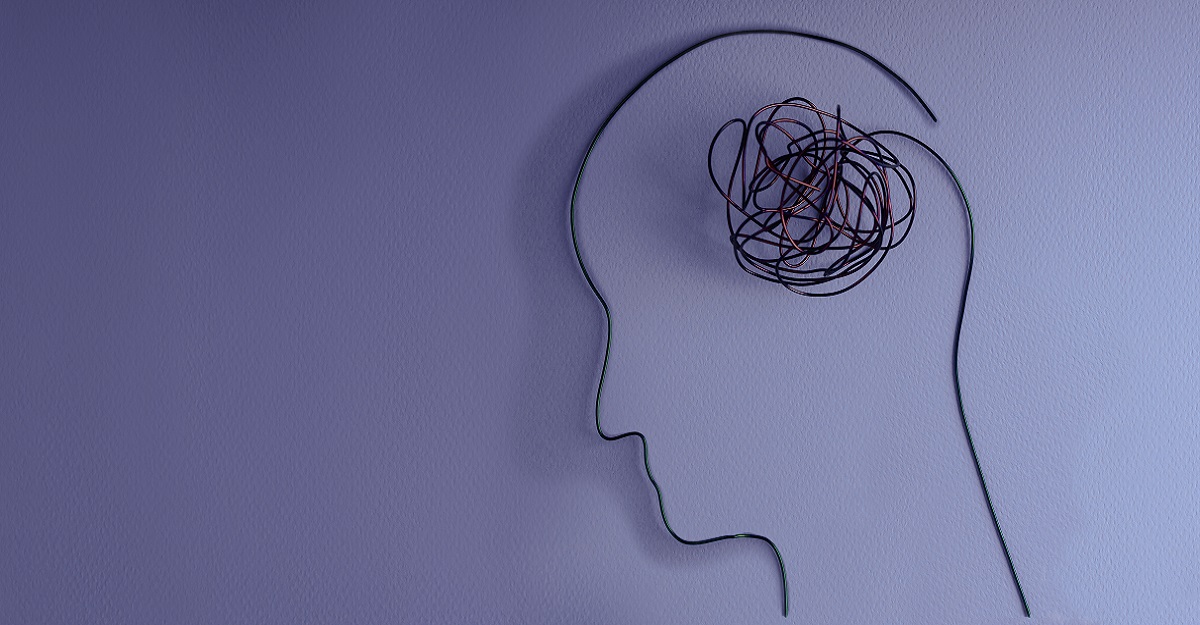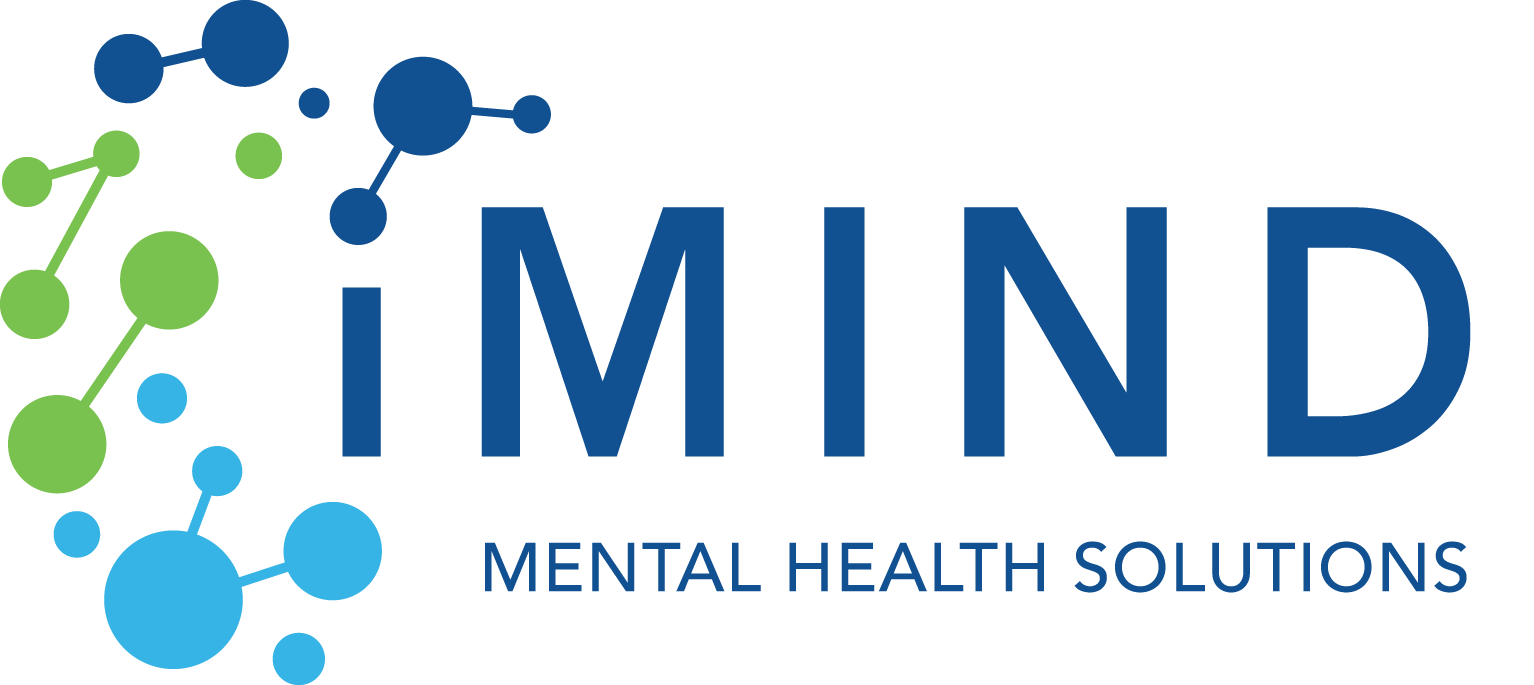What is the Hardest Mental Illness to Have?
iMind Mental Health Solutions Resource

Mental health is a complex part of our wellbeing, deeply personal and uniquely challenging for each one of us. When it comes to mental illnesses, there is no one-size-fits-all. Each condition brings its own set of obstacles and experiences. When we ask, “What is the hardest mental illness to have?” the answer is far from straightforward. It is not about labeling one condition as the most challenging, but rather understanding the diverse range of mental illnesses and the unique hurdles each one presents.
For instance, anxiety disorders can severely hinder a person’s daily functioning, often making even routine tasks challenging. On the other hand, schizophrenia profoundly alters one’s perception of reality, posing significant treatment challenges. Personality disorders, with their deeply ingrained patterns of thought and behavior, present yet another set of problems. Mood disorders such as depression can affect motivation and behavior as well. And within each of these broad categories lie individual stories, each marked by their struggles, triumphs, and ongoing battles.
To further complicate matters, people with the same mental illness can have widely different experiences. Factors such as personal history, support systems, access to treatment, and individual resilience play a significant role in shaping one’s experience of mental illness. It is important to view mental health challenges with a deep sense of empathy and recognize the need for compassionate care for everyone facing these challenges.
Anxiety Disorders: A Common Struggle with Complex Challenges
“Living with anxiety feels like you are constantly on edge and constantly overthinking and worrying about things. For me, everything that I say, I rethink and overthink in my head, wondering if I said the wrong thing, or maybe I offended someone, or maybe I talked too much and annoyed the people I am talking to.
Everything I say or do, I rethink after it is done and I analyze it in my head and just keep on thinking about it until I have analyzed every aspect…
It isn’t just about social settings, it’s all the time; I analyze the work I am doing, I analyze the setting I am in, I analyze everything and just overthink everything.”
—Madison T., as interviewed by WonderMind, Here’s What Anxiety Actually Feels Like
Anxiety disorders top the list of most common mental health issues. These disorders can range from generalized anxiety, characterized by an almost-constant state of worry, to specific phobias or panic disorders, where intense fear strikes suddenly and overwhelmingly and then recedes.
Nearly one in three, or 31.9 percent, of teenagers from 13 to 18 years old experience anxiety disorders, along with close to one in five, or 19.1 percent, of adults. The prevalence of these conditions underscores a significant health concern, as they can deeply impact a person’s day-to-day life. People with anxiety may find it hard to maintain relationships, perform at work, or even carry out everyday tasks.
Although anxiety is treatable, the majority of people (north of 60 percent) do not seek treatment for it.
The Genetic Factor
One of the key challenges in treating anxiety disorders stems from their genetic basis, which makes it a deeply ingrained part of some people’s lives. Chronic anxiety is not just a passing phase or a reaction to external stressors, nor is it simply about being nervous. For some people, it’s about dealing with a condition that’s part of your biological makeup.
If a close relative of yours has anxiety, your are at double to six times the risk of developing it yourself.
Two gene clusters involving the glutamatergic system and serotonergic/dopaminergic signaling have been associated with anxiety disorders. These gene differences can affect your mood, memory, and motivation, as well as your feelings of pleasure and satisfaction and even your sleep.
The Impact of Untreated Anxiety
The consequences of untreated anxiety are far-reaching. Persistent anxiety can lead to physical health problems like heart disease, chronic respiratory disorders, and gastrointestinal conditions. It can also pave the way for other mental health issues such as depression or substance abuse, as individuals might turn to unhealthy coping mechanisms to manage their symptoms. Socially, people with untreated anxiety may withdraw from friends, family, and community activities, leading to isolation and a decreased quality of life.
Again, anxiety is treatable. There is no reason to suffer needlessly. People with anxiety symptoms should be encouraged to reach out to qualified mental health professionals for help.
Schizophrenia: Navigating a Complex Condition
“At the end of 2008, I started experiencing strange symptoms. I began feeling paranoid. I started seeing things and hearing voices. I didn’t want to get dressed or even get out of bed. I didn’t understand what was going on.
By July of 2009, I was hospitalized. The doctors there thought I had a mood disorder—they thought maybe I was bipolar—and put me on a number of medications. But once I got out of the hospital, I stopped taking them. My symptoms were gone, so I assumed I’d be fine…
Still, the memory of those strange symptoms lingered in my mind. In April 2010, when the symptoms returned and I began feeling paranoid again, my family convinced me to check myself into a psychiatric hospital. The doctors there still thought I had a mood disorder because I didn’t tell them about my paranoia, or about suddenly hearing voices in my head…
My grandmother got really sick around Christmas that year. When I saw her in the hospital with all those tubes, I just lost it. I got so hysterical that I had to be escorted out. Soon after that, I got into that altercation with my neighbor and was sent to jail. My symptoms were acting up and I felt so angry.
When I got out of jail, the judge said I had to go to a state psychiatric hospital. I was really nervous, but I talked to a psychiatrist there who made me feel comfortable. For the first time, I opened up about what I was experiencing—the voices, the paranoia. She said, ‘You are battling schizophrenia.’ [At the time] I didn’t even know what that meant.”
—Tanara, ‘I Have Schizophrenia’: What It’s Really Like to Live with the Mental Illness,’ Johnson & Johnson
As Tanara’s story illustrates, it can sometimes be a long road to diagnose schizophrenia. Typically emerging in a person’s 20s and 30s, the condition significantly impacts a person’s cognitive and emotional functioning, altering their thoughts, feelings, and actions. It can profoundly alter a person’s perception of reality, often making it difficult for them to distinguish what is real from what is not.
Symptoms of Schizophrenia and Their Effects on Reality Perception
Schizophrenia’s symptoms can be grouped into three main categories:
- The first, known as ‘positive symptoms,’ includes experiencing sensations that aren’t real, such as hearing voices or seeing things, and holding onto beliefs that are not based on reality.
- The second category, ‘negative symptoms,’ involves a reduction in normal functions, manifesting as a lack of emotional expression or difficulty managing daily tasks.
- The third category, ‘cognitive symptoms,’ impacts mental functions and includes challenges with focus, memory, and decision-making abilities. These categories help in understanding and treating schizophrenia by identifying the specific ways it affects individuals.
People with schizophrenia might hear voices, believe others are plotting against them, think they have special powers or are famous. These experiences are frightening and may cause the person to be confused and agitated, and to withdraw. The impact on reality perception makes it challenging for individuals with schizophrenia to lead typical, everyday lives.
Schizophrenia is a type of psychotic disorder, a group of serious mental illnesses which has the highest suicide mortality rate. However, like many mental illnesses, it is treatable.
Challenges in Schizophrenia Treatment
Treating schizophrenia can be complicated because it presents differently from person to person. While one person might have severe hallucinations, another might struggle more with emotional flatness or a lack of motivation. This variability can make developing a standardized treatment approach difficult.
Again, schizophrenia can be difficult to diagnose. Early symptoms such as irritability, unusual thoughts, or changes in social behavior, can be subtle or similar to those of other mental health conditions. This can lead to misdiagnosis or delays in getting the correct diagnosis and starting effective treatment.
Antipsychotic medications are commonly used to manage schizophrenia symptoms. However, these drugs can have significant side effects like weight gain, diabetes, dizziness, and blurred vision, which can discourage patients from continuing their medication regimen. That’s why certain psychotherapeutic modalities such as cognitive behavioral therapy can be a helpful addition to a treatment plan as it can also help reduce symptoms, without side effects.
Research continues to discover new, more effective treatments for schizophrenia.
Mood Disorders: The Stormy Seas of Emotion
“Depression is a sink full of unwashed dishes—or piles and piles of laundry. Depression is greasy hair and unbrushed teeth. Depression is headaches, stomachaches, backaches, and other bodily aches. It is physical and nestled deep in your bones. Depression is chronic pain. Depression is sleep-filled days and sleepless nights, and it is binge-eating or avoiding food at all costs.
Depression is feeling utterly helpless and hopeless. Even when you have everything going for you. Even when, on paper, you are on top of the world. Depression is feeling completely and totally alone. Even with your loved ones. Even in a crowded room. Depression robs you of purpose. Of passion. You lose interest in the things which once captivated you. Pleasure is all but gone.”
—Kimberly Zapata, What It Really Feels Like to Live with Bipolar Disorder, Verywellmind.com
Mood disorders are mental illnesses that affect a person’s emotions. The impact can be severe and debilitating, and even lead to suicide. Mood disorders include:
- Major Depressive Disorder: With major depressive disorder, people consistently feel sad and lose interest in things they once found enjoyable. Depression touches not just your feelings but also your thoughts and behavior. Ultimately, it can cause physical issues such as painful joints, back, arms and legs. It can leave you feeling fatigued, lead to trouble sleeping, and cause unintended changes in your weight due to over- or undereating. The good news is that there are many evidence-based, FDA cleared or approved, cutting edge treatments for depression.
- Bipolar Disorder: Formerly known as manic depressive disorder, bipolar disorder involves shifts between mania, or an emotional high, and depressive lows. These swings in mood can be extreme and make it difficult to function in everyday life.
- Cyclothymia: Less extreme mood swings are characteristic of cyclothymia. You may feel “up” for several days and then feel down for another period of time. These shifts are noticeable and do have an effect on your life.
- Hypomania: A milder form of mania, hypomania involves periods of high energy and hyperactivity. These periods tend to subside more quickly than do the manic episodes of bipolar—typically, a few days versus weeks.
- Persistent Depressive Disorder: People with persistent depressive disorder have a level of depression that is chronic but not severe enough to meet the major depressive disorder diagnosis criteria.
- Premenstrual Dysphoric Disorder (PMDD): PMDD causes severe mood changes in the week to two weeks leading up to a period.
- Disruptive Mood Dysfunctional Disorder: This disorder can affect children starting at age 6 and continue until adulthood at age 18. Symptoms are frequent outbursts, anger and irritability beyond what is expected at each stage of growth. DMDD is chronic, severe, and not simply a bad mood.
Difficulties in Treating Mood Disorders
Mood disorders can typically be treated successfully with a combination of therapy and medication. However, with depression in particular, a subset of patients fit the criteria for treatment-resistant depression (TRD).
TRD affects an estimated 30 percent of patients with major depressive disorder, and is unresponsive to two or more courses of antidepressants. New hope for treatment-resistant depression has dawned in the form of transcranial magnetic stimulation, Spravato, and vagus nerve stimulation. Each of these evidence-based, FDA-approved methods has high success rates for treatment-resistant depression. The challenge is in getting the word out to those with TRD and their healthcare practitioners.
Personality Disorders: A Complex Spectrum
“For me, OCD feels like you’re not in control of your brain. Intrusive thoughts – vivid, visual images of the most horrendous things – plague me on a daily basis. I pick up a knife to chop an onion and see myself stabbing someone. I pick up a cup of tea and see myself throwing it on someone. I stand on the Tube platform and see myself pushing someone onto the tracks.
The questions I ask myself whilst thinking these thoughts do not help matters at all: What kind of person could conjure up such ideas? What if I did act upon these images? What if these things are what I subconsciously want to do? The questions only lead me around in circles, and fuel the intrusive thoughts until they return with a dizzying ferocity.”
—Alice Franklin, What It Feels Like to Live with OCD, International OCD Foundation
Personality disorders are types of mental health issues where people have long-lasting patterns of thoughts, feelings, and behaviors that are quite different from what is generally expected in their culture.
These patterns are rigid and widespread, affecting many areas of life, including a person’s relationships, social life, and job. This often leads to significant problems or distress in these areas.
Types of Personality Disorders
Personality disorders are grouped according to their symptoms.
- Cluster A (Odd or Eccentric Disorders): People in this cluster may exhibit unusual behavior or thinking. Conditions in this cluster include: schizotypal personality, schizoid personality, and paranoid personality disorder.
- Cluster B (Dramatic, Emotional, or Erratic Disorders): These disorders are marked by intense, emotional, or unpredictable thinking or behavior. This cluster includes narcissistic personality, antisocial personality, borderline personality, and histrionic personality disorder.
- Cluster C (Anxious or Fearful Disorders): People with these disorders are frequently anxious or fearful. Avoidant personality, dependent personality, and obsessive-compulsive personality are all Cluster C disorders.
Difficulties in Treating Personality Disorders
Treating personality disorders presents unique challenges. The symptoms of personality disorders are deeply ingrained in a person’s character, often making them hard to distinguish from the individual’s self-identity. This can make it hard for people to recognize that their behaviors are problematic or different from the norm.
Many individuals with personality disorders may not recognize or accept that they have a problem that requires treatment. This lack of insight can be a significant barrier to seeking help and engaging in therapy effectively.
Often, personality disorders co-exist with other mental health conditions like depression or anxiety, which complicates the treatment process.
Treatment often requires a tailored approach, as different personality disorders respond to different types of therapy. For example, borderline personality disorder typically responds well to dialectical behavior therapy (DBT) while cognitive behavioral therapy (CBT) may be more suitable for others.
Borderline Personality Disorder (BPD)
“Borderline personality disorder is like the emotional version of being a burn victim. Everything hurts more than it seems to for everyone else, and any ‘thick skin’ you’re supposed to have just isn’t there.”
—Borderline Personality Disorder, Mind.org
Borderline personality disorder, one of the cluster B personality disorders, is a deeply complex mental health condition known for its significant impact on interpersonal relationships and emotional regulation. It has also been called emotionally unstable personality disorder (EUPD).
People with borderline personality disorder often experience intense emotions, major mood swings, a fear of abandonment, and trouble maintaining healthy relationships. Their relationships can be intense but unstable, with a pattern of idealizing and then devaluing others. This can lead to turbulent interactions with family, friends, and romantic partners.
One of the central challenges in treating BPD is the sudden and unpredictable changes in the patient-therapist relationship. People with BPD may initially idealize their therapists, seeing them as perfect or all-knowing. However, this can quickly shift to devaluation if they feel criticized, rejected, or disappointed. These swings can make it challenging to establish a consistent therapeutic alliance, which is crucial for effective treatment.
Additionally, therapy adherence can be problematic. The intense emotions and instability in self-image associated with borderline personality disorder can lead to difficulties in sticking to a treatment plan. Patients may struggle with attending regular therapy sessions or may abruptly stop treatment if they feel it’s not working or if they have a conflict with their therapist.
Despite these challenges, there are effective treatments for BPD. Dialectical behavior therapy, for instance, has been particularly successful. DBT focuses on teaching skills to handle emotions, improve relationships, and curb self-destructive behaviors. Other methods, like cognitive behavioral therapy and psychodynamic therapies, can also be beneficial. These treatments require a committed effort from both the patient and the therapist, and support from family and friends can also play a significant role in the success of the treatment.
Shared Challenges Across Mental Disorders
When it comes to mental health, several challenges are commonly faced across various mental disorders, impacting the effectiveness of treatment and the wellbeing of those affected.

Stigma and Misunderstanding
The negative attitudes and false beliefs surrounding mental illness is one of the biggest obstacles to mental health treatment. This stigma can come from society, within families, or even from the individuals themselves. It often leads to misunderstanding and misrepresentation of mental health conditions, causing many people to avoid seeking help due to fear of judgment or discrimination. This lack of understanding can also affect the support someone receives from their community and loved ones, which is crucial for effective treatment and recovery.

Fewer Career Opportunities
Mental illness effects employment. Those with any level of severity of mental illness had a lower percentage of employment. In fact, employment rate decreased as the level of severity level of mental illness increased:
Those with mild mental Illness had a 68.8 percent employment rate, or 9 percent lower than those with no mental illness (75.9 percent).
Those with moderate mental illness had a 62.7 percent employment rate, or 17 percent lower than those with no mental illness.
Those with serious mental illness had a 54.5 percent employment rate, or 28 percent lower than those with no mental illness.
Mental illness not only impacts employment but income as well. Nearly four out of 10, or 39 percent, of those with a serious mental earned less than $10,000 annually—a 70 percent higher rate than those with no mental illness, of whom only 23 percent were below the $10,000 income threshold.

Internalizing and Externalizing Disorders
Mental disorders can be broadly categorized into internalizing and externalizing disorders, with each group sharing a unique set of challenges.
- Internalizing Disorders are characterized by symptoms directed inward. Examples include depression and anxiety. Individuals with these disorders may experience intense internal distress, leading to withdrawal from social interactions, feelings of worthlessness, and, in severe cases, self-harm.
- Externalizing Disorders involve symptoms that are directed outward, such as in conduct disorders or certain phases of bipolar disorder. Challenges here include impulsive and often disruptive behaviors, difficulty in maintaining relationships, and conflicts with societal norms and rules.
Both types of disorders can cause significant difficulty in personal, social, and job situations. They often require comprehensive treatment approaches, including therapy, medication, and strong support systems.
All Mental Illness is Hard, But There is Hope
The journey through mental illness is deeply personal and unique for everyone. Our focus should be that of empathy, understanding, and personalized approaches to mental health care.
There is good news in that many mental illness cases do respond to treatment. The key to successful management of any mental health condition is early, personalized care. Seeking help as soon as symptoms are recognized can lead to better outcomes and a more manageable path forward. It’s so important for individuals, families, and communities to foster safe environments where seeking mental health support is not seen as a weakness, but a strength.
With the right support and treatment, people facing mental health challenges can lead fulfilling, productive lives. By prioritizing mental health care, supporting those who struggle, and continuing to combat the stigma surrounding mental illness, we can all contribute to a healthier, more understanding society.
- Anxiety Medication: Types, Side Effects And More. (2024, February 23). Forbes Health.
- Disruptive Mood Dysregulation Disorder: The Basics – National Institute of Mental Health (NIMH). (n.d.). www.nimh.nih.gov.
- Facts & Statistics | Anxiety and Depression Association of America, ADAA. (n.d.). Adaa.org.
- Franklin, A. (2019, April 22). What it feels like to live with OCD. International OCD Foundation.
- Hanawalt, Z. (2022, October 10). Here’s What Anxiety Actually Feels Like. Wondermind.
- Luciano, A., & Meara, E. (2014). Employment Status of People With Mental Illness: National Survey Data From 2009 and 2010. Psychiatric Services, 65(10), 1201–1209.
- Mind.org. (2022, September). About BPD. www.mind.org.uk; Mind.
- Song, Y., Rhee, S. J., Lee, H., Kim, M. J., Shin, D., & Ahn, Y. M. (2020). Comparison of Suicide Risk by Mental Illness: a Retrospective Review of 14-Year Electronic Medical Records. Journal of Korean Medical Science, 35(47).
- Trivedi, M. H. (2004). The Link Between Depression and Physical Symptoms. Primary Care Companion to the Journal of Clinical Psychiatry, 6(Suppl 1), 12–16.
- What It Really Feels Like to Live With Bipolar Disorder. (n.d.). Verywell Mind.
Latest News
-
Top 10 Questions About Art Therapy for Mental Health
Art therapy has recently gained recognition for its unique blend of healing therapy and personal expression. Despite its growing popularity, there seems to be some misunderstanding about what art therapy entails, who it can benefit, and how it differs from other forms of therapy.
-
ADHD Strengths: The Positive Side of Attention Deficit Hyperactivity Disorder
Scattered minds, fidgety bodies, and difficulty focusing. Attention Deficit Hyperactivity Disorder (ADHD) often gets painted in shades of struggle. But what if there’s a brighter side to the story? What if, beneath the challenges of ADHD, lie unique strengths just waiting to be unlocked?



